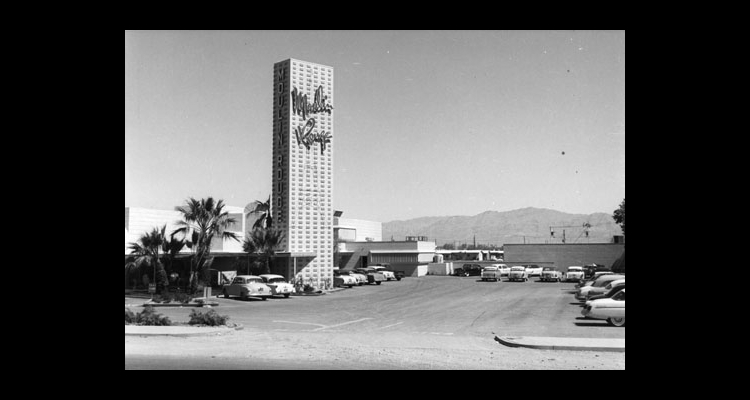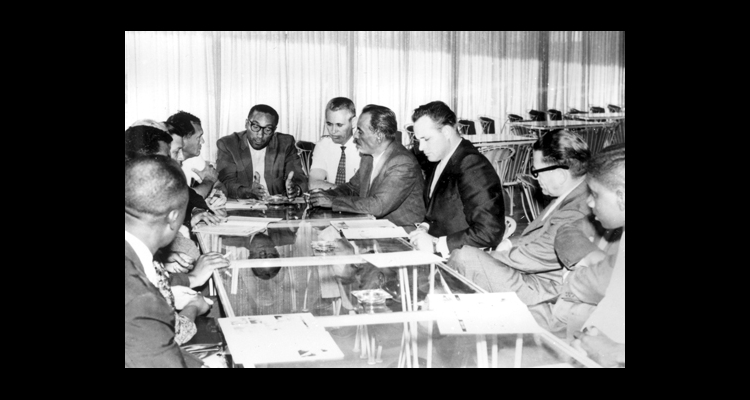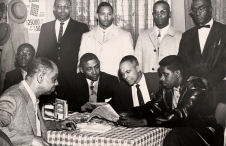Moulin Rouge
The first integrated hotel-casino in Las Vegas, the Moulin Rouge, opened on May 24, 1955 on West Bonanza Road, at the edge of West Las Vegas, the town's segregated area. Owned almost wholly by whites and intended to compete with whites-only resorts on the Strip and downtown, it originally attracted comparatively few African Americans, who resented the idea of a segregated casino.
Still, the Moulin Rouge benefited from the presence of black entertainers such as Sammy Davis, Jr., Pearl Bailey, and Louis Armstrong, who appeared in Strip showrooms but were banned from staying at the hotels or gambling in their casinos. They and others frequented the Moulin Rouge, and white entertainers often joined them after their shows to gamble and perform. The Moulin Rouge also provided employment for local African American entertainers, most notably as hosts and chorus girls.
The Moulin Rouge closed after six months, the victim of its location away from other resorts and local overbuilding. The Riviera, Dunes, New Frontier, and Royal Nevada all opened that year and ran into financial trouble as well. But that was not the end for the Moulin Rouge. It opened and closed several times and went through a series of owners, most notably Sarann Knight-Preddy, the first African American woman to hold a Nevada gaming license. The Moulin Rouge also was the site of the meeting in 1960 that led to an agreement between civil rights leaders and casino owners to allow African Americans to gamble at Strip and downtown properties—a step that also reduced the Moulin Rouge's clientele.
The casino, listed in the National Register of Historic Places, burned early in the morning of May 29, 2003.






